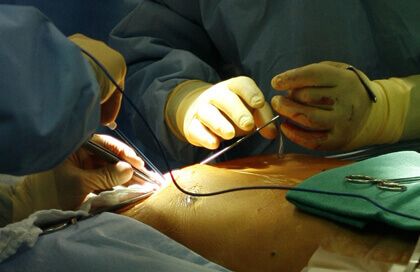After the “EXCEL scandal” at the end of last year, study investigators have been publishing explanations and sub-studies that were planned from the beginning, but which can still be interpreted as explanations.

This sub-study states that revascularization was more common in the angioplasty arm, but only revascularizations performed on the target lesion, regardless of the treatment strategy, were associated with higher mortality.
At 3 years, the need for revascularization following angioplasty or surgery for left main coronary artery disease was associated with a twofold increased risk of all-cause mortality (hazard ratio [HR]: 2.05; 95% confidence interval [CI]: 1.13-3.70) and a more than fourfold increased risk of cardiovascular mortality (HR: 4.22; 95% CI: 2.10-8.48).
Regardless of the initial strategy, the need for repeat revascularization of the target lesion darkens the prognosis for all patients.
Read also: Latest Guidelines “Dropped” After Scandal Over EXCEL Results.
This new EXCEL analysis recently published in JACC was meant to assess the incidence, timing, and prognostic impact of repeat revascularization following angioplasty or surgery for left main coronary artery disease.
The analysis included a 3-year follow-up and not the 5-year follow-up that caused so much controversy last month.
Repeat revascularization as an endpoint is often criticized (especially by interventional cardiologists) because it is considered as “softer” than hard endpoints such as death, infarction, or stroke.
Read also: The EXCEL Authors’ Answer to the BBC Investigation.
The EXCEL included 1905 patients with left main coronary artery disease and randomized them to angioplasty with an everolimus-eluting stent (Xience) versus surgery. Both the 3-year and the 5-year follow-up showed no statistically significant difference in the composite endpoint of death, infarction, or stroke. Regardless of its statistical importance, surgery showed an advantage in terms of mortality that immediately prompted a debate between surgeons and interventionalists.
In the 3-year follow-up, the overall incidence of repeat revascularization was 9.7%, with 12.9% for the angioplasty group versus 7.6% for the surgery group (HR: 1.73; 95% CI: 1.28-2.33).
Higher body mass index, insulin-treated diabetes, and need for hemodynamic support during the initial procedure were each predictors of repeat revascularization in the angioplasty arm, while younger age, female sex, and peripheral vascular disease predicted a repeat procedure in the surgery arm.
Read also: Soon after the EXCEL “Scandal” the NOBLE 5-year Outcomes Come Out: Mere Coincidence?
The idea of repeat procedures being benign falters after this analysis (at least, as far as left main procedures go), but the magnitude of its impact in terms of mortality is much lower than that of infarction or stroke.
One of the explanations for this is that not all reinterventions are the same. Only those conducted in a previously treated area are associated with more events; in contrast, non-target-vessel reinterventions are not linked to a higher risk of death.
Original title: Mortality after repeat revascularization following PCI or CABG for left main disease: the EXCEL trial.
Reference: Giustino G et al. J Am Coll Cardiol Intv. 2020; Epub ahead of print.
Subscribe to our weekly newsletter
Get the latest scientific articles on interventional cardiology
We are interested in your opinion. Please, leave your comments, thoughts, questions, etc., below. They will be most welcome.





